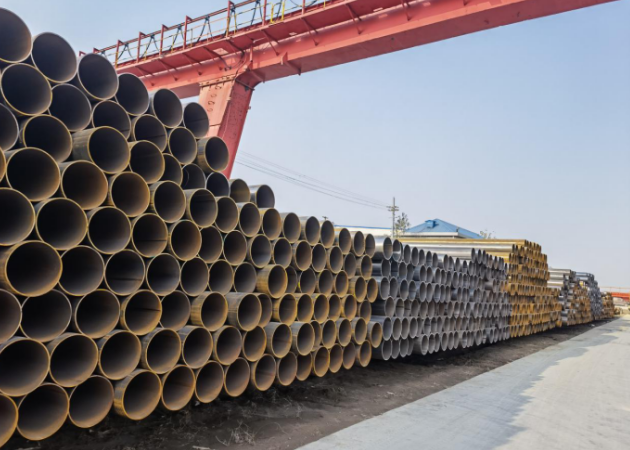
How to Ensure the Quality of High-frequency Welded Pipes in the Production Process?
The production process of high-frequency welded pipes (ERW steel pipe) mainly depends on the type of product. From raw materials to finished products, a series of processes are required. The completion of these processes requires various corresponding mechanical equipment, welding, electrical control, and testing equipment. So, in the production of high-frequency welded pipes, what influence does the operation have on the welding quality?
1. Welding pressure
Welding pressure is one of the main parameters of the welding process. After the two sides of the tube billet are heated to the welding temperature, ordinary metal crystal grains are formed under the action of the extrusion pressure, that is, mutual crystallization produces welding. The welding pressure affects the strength and toughness of the weld. When the applied welding pressure is small, the welding edge of the metal cannot be completely suppressed, and the residual non-metallic inclusions and metal oxides in the welding seam are not easily discharged due to the low pressure, the welding seam strength is reduced, and the welding strength is easy to crack; when the pressure is too high At this time, most of the metal reaching the welding temperature is squeezed, which not only reduces the strength of the weld, but also produces defects such as excessive internal and external burrs or surfacing. Therefore, in practical applications, the best welding pressure should be obtained according to different specifications.
Due to possible tolerances in the width and thickness of the tube blank, as well as fluctuations in welding temperature and welding speed, changes in welding extrusion pressure may be involved. The welding squeeze amount is generally controlled by adjusting the distance between the squeezing rollers, and can also be controlled by the pipe diameter before and after the squeezing rollers.

2. Welding speed
The welding speed is also one of the main parameters in the welding process, which is related to the heating system, the welding seam deformation speed and the mutual crystallization rate. In high-frequency welding, the welding quality improves with the increase in welding speed. This is because the heating time shortens the width of the edge heating zone and shortens the time for forming metal oxides. When the welding speed decreases, not only does the heating zone widen, but the width of the melting zone also changes with the input heat, which causes the internal burrs to become larger. In low-speed welding, the input heat is small and the welding is difficult. If the specified value is not followed Welding is prone to defects.
Therefore, in high-frequency welded pipes, the appropriate welding speed should be selected according to different specifications, and the maximum welding speed allowed by the mechanical equipment and welding equipment of the device is limited.
3. Opening angle
The opening angle refers to the angle between the two sides of the blank tube at the front of the squeeze roll. The opening angle is related to the stability of the firing process and has a great influence on the welding quality. When the opening angle is reduced, the distance between the edges is also reduced, thereby enhancing the proximity effect. Under the same other conditions, the heating temperature of the edge can be increased, thereby increasing the welding speed. In the case that the opening angle is too small, the distance between the confluence point of the squeeze roller and the center line will be extended, resulting in the edge not being squeezed at the highest temperature, thereby reducing welding quality and increasing power consumption.
Tips: In case ASTM A53 Grade B in ERW (electric resistance welded) pipe, the weld seam shall be done the heat treatment with a minimum 1000°F [540°C]. In this way the no untempered martensite remains.
In case ASTM A53 B pipe in cold expanded, then expansion should not exceed 1.5% of the required OD.


